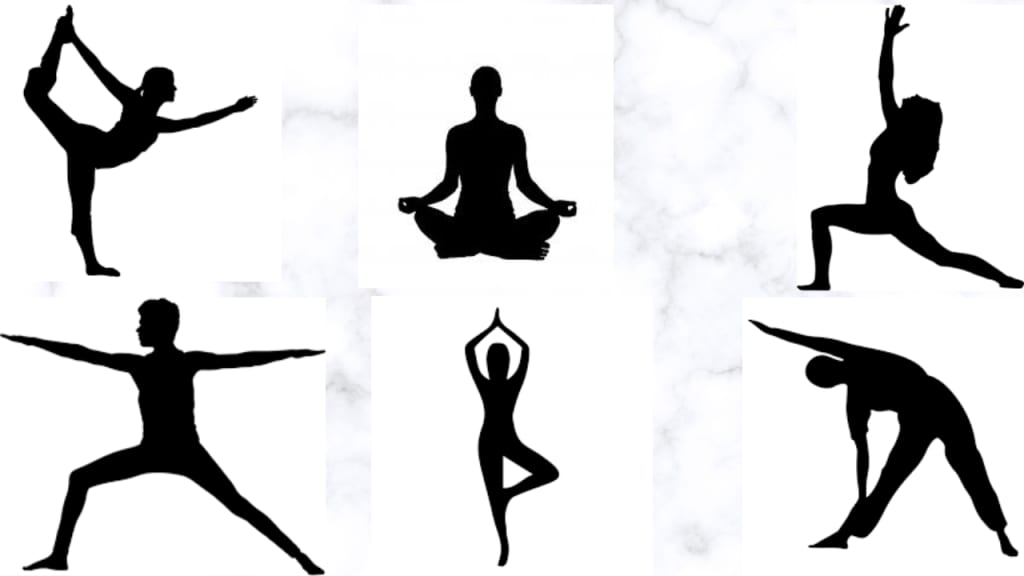
Yoga is the union of the body and the mind. The yoga exercises involve alternation of tension, which works on strengthening and mobilizing body muscles, and relaxation, which helps maintain muscle tone.
Yoga is beneficial for physical mobility, strength, general well-being, and stress symptoms. It is especially helpful for the elderly and those with injuries. Yoga is also a good workout duration-wise.
# How to start with yoga?
The benefits of yoga are not contingent upon an extended warm-up before starting exercises. Light, mobilizing exercises can prepare your body for intense exercise as well as mentally prepare you from the stress of daily life.
A lack of competitiveness does not mean a lack of ambition. People often try to do things that exceed their physical limits, which leads to back and joint problems. However, those problems can be reduced with the right precautions and the help of yoga. Yoga is not a competitive sport, but it has real benefits for people who are performing it correctly.
The effect of practicing yoga changes depending on the type of complaint. If you practice once a week, it is enough. Ideally, however, 3-4 days a week would have the best result.
# Positive effects of yoga on health
Yoga has countless positive sides, in general, it affects the body and mind
relaxing
mobilizing
strengthening
balancing
circulation-enhancing
concentration-enhancing
invigorating
holistic
Classic yoga consists of 5 elements:
Physical Exercises (Asana)
Breathing exercises (Pranayama)
Nutritional Recommendations
Inner reflection and concentration (meditation)
Relaxation
The asanas can generally be divided into:
There are asanas that can be done with the body flexed forward, such as variations of the warrior or the bridge.
Forward bending asanas (e.g. the seated forward bend, Paschimottanasana)
Some twisting postures like the lying twist or half twist can help alleviate flatulence, constipation, and menstrual cramps.
Balance asanas (e.g. the dancer, "Natarajasana")
Standing asanas (e.g. the tree, "Vrikshasana")
Sitting postures (e.g. meditation posture, "Siddhasana")
Yoga is only as effective as the sequence of positions and postures, which can vary according to your own needs.
# Get healthy with yoga
Yoga can be used for medical purposes, and conventional medicine is suitable. However, yoga cannot replace medical diagnosis, which should always be done individually by a trained therapist. Cymatic offers supplementary therapy to patients with particular conditions.
The benefits of yoga for people with asthma include the deep and slow breathing that it fosters. Yoga has also been shown to calm the vegetative nervous system.
Yoga’s calming effects can also be beneficial for heart conditions such as high blood pressure. Studies have shown that hatha yoga in particular leads to a significant improvement in high blood pressure (hypertension) after just 4 weeks.
Scientific research suggests that after 6 months of regular exercise, blood sugar levels can reduce for people with diabetes. People who are overweight have also been shown to lose weight and even yoga moves, though not always for fat reduction, still have many benefits like raising metabolism and reducing body weight.
The calm methods of yoga can relieve migraines, taking the pressure away and stopping them in their tracks.
If you're suffering from back or joint pain, then one of the best things you can do is to take part in yoga exercises. Yoga offers a variety of benefits for minor injuries, including promoting flexibility and strengthening strained muscles.
# The health uses of yoga
Yoga therapy combines components of traditional Indian yoga, like breathing and meditation. However, the combination is tailored to the individual’s needs to create personalized treatments for them.
With yoga, there are exercises that depend on the individual's problem. For example, with orthopedic problems, yoga can be used to alleviate symptoms like a bad back and migraines. But it is never solely about the symptoms; this holistic approach focuses on the person themselves as a whole.
Essentially, yoga works in two ways:
Yoga is beneficial to your posture, but not all exercises are appropriate.
# Yoga affects the body and mind
An advantage of movement and breathing exercises is that they make the body feel more balanced, clear muscles of tension, and provide a change in posture.
Yoga is a need-based exercise that can help bring the body back into balance. The relaxation and gentle movements calm the sympathetic nervous system, and the balancing of these systems reduces stress.
# Classic yoga styles
One type of yoga is Hatha Yoga. Although it's most popular in the West, its origins are found in India and it consists of physical or breathing exercises. The goal is to strengthen your body with endurance and energy by developing individual exercise programs that you can also do at home.
Ashtanga Vinyasa Yoga is a dynamic form of yoga that teaches physical exercises, breathing techniques, and jumps and movements. The principles come from Indian Sri Krishna Pattabhi Jois, who established the style in 1915.
Iyengar Yoga is a powerful type of yoga developed in India in the early 20th century. Iyengar Yoga aids are made to make certain forms of yoga easier, such as benches and chairs. Group Iyengar Yoga should facilitate individual programs.
For about 50 years, this type of yoga has combined classic asanas with breathing and relaxation exercises, as well as with meditation and nutrition. The basis is a healthy attitude towards life. Sivananda yoga promotes serenity, concentration, mobility, and love for life and is good for coping with stressful situations.
Integral Yoga combines exercises for posture, relaxation, breathing exercises, and meditation. While some forms of yoga focus on the physical aspect in a more secular way, integral yoga is more spiritual and includes contemplation and meditation.
Kundalini Yoga is a form that involves stimulating the Kundalini, dormant energy in the pelvic area and spine. Asanas and dynamic movements are combined with cleansing breathing exercises. A practice sequence of about 45 minutes is followed by 15 minutes of meditation.
Jnana Yoga is a form of yoga that asks the student to gain knowledge through meditation and reflection.
Karma Yoga is a holistic practice that pushes us to be open and accepting of the world. It means living every moment with intention. Karma Yoga is also a psychological practice, as it teaches how to deal with tough people and common activities without reacting in an unhelpful way. We are striving for peace through self-acceptance and inner tranquility.
Bhakti-Yoga means becoming one with the divine and is an important part of Indian culture. One of the most important parts of this type of yoga is meditation which should be practiced daily. Some other types of yoga were more heavily influenced by Indian culture.
# Young trends and mixed forms
Luna Yoga: A western style that combines traditional elements of classical yoga with body therapy. The energy of the pelvic area and the function of the pelvic organs are the focus of this direction. The aim is to keep the sexual organs healthy, but also to discover one's own abilities and personal creativity.
Power Yoga: Power Yoga is a type of Yoga where the key part of the exercise is to balance, strengthen and coordinate your breathing. Power Yoga positions are held for a longer period of time in order to better enhance these qualities.
Tao Yin Yoga: Tao Yin Yoga is a type of Hatha yoga focused on correct breathing and strengthening one’s abdomen and back. This exercise trains flexibility and mobilizes the muscles, ligaments, and tendons, as well as helps promote relaxation techniques.
Yogalates: At the beginning of a yogalates class, you do yoga exercises, and at the end, you do pilates. Borenstein added spiritual elements to this aerobic routine. The goal is to recognize and dissolve blockages in order to free the mind.
Hormone Yoga: Yoga has been used in Brazil to treat varying symptoms of menopause, insomnia, and even menstrual pain. Hormone Yoga is a type of yoga supplemented by Tibetan energy exercises that is particularly beneficial for women who are going through menopause because it increases the activity in their ovaries and helps relieve some of their symptoms.
For example, hormone yoga is not safe for women with hormone-related breast cancer, endometriosis, fibroids, osteoporosis, or heart disease. It’s also not safe to use during pregnancy.
Children's yoga: Yoga has benefits such as improving concentration and motor skills, as well as preventing postural damage and bad posture. Studies have shown that yoga can be effective for children, especially at school.
Pregnancy yoga: Pregnancy yoga focuses on gentle stretches and correct breathing, which will strengthen the muscles, ligaments, tendons, spine, and well-being of the mother and child. To studies, pregnant women who practice yoga are much more at ease during labor than those who do not.
Parenting classes can help you strengthen your muscles after childbirth. Postnatal yoga is good for strengthening the pelvic floor, abdominal and back muscles, and it should be practiced 6 weeks after birth.
Yoga 50+: For older people, yoga classes are a good investment. They can improve your strength, protect against falls, lead to more serenity, and can increase mobility. Yoga for mature beginners is a great way to stay healthy.
# The right equipment for yoga
There are many benefits to practicing yoga. It does not require any expensive equipment and the outfit needs to fit snug, but be breathable and made of natural material for a good climate exchange. A basic for this is a mat, which can vary in strength and design, such as a rubber mat that is recyclable or one made from natural latex with a rubber underside.
# Health Hazards: When the body signals "break".
Skip yoga if you are ill. Walking is a much more gentle alternative and should be included in your physical activity routine.
What is the best form of exercise during a cold, flu, or other acute or febrile illness?
For those who experience back pain, yoga can help. Some poses are bad for people with certain conditions, so they should be discussed with your doctor.
For a risk-free yoga class, be sure to provide the teacher with any pre-existing conditions you may have, and be careful not to overstep your comfort zone.
About the Creator
Sunil Kedar
I am a very interesting person, I like to write on many different topics. I like to read different topics and I like to observe the people around me.
Enjoyed the story? Support the Creator.
Subscribe for free to receive all their stories in your feed. You could also pledge your support or give them a one-off tip, letting them know you appreciate their work.





Comments
There are no comments for this story
Be the first to respond and start the conversation.